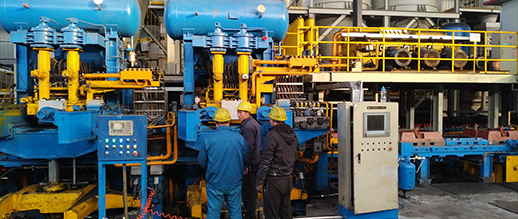
-
 Afrikaans
Afrikaans -
 Albanian
Albanian -
 Amharic
Amharic -
 Arabic
Arabic -
 Armenian
Armenian -
 Azerbaijani
Azerbaijani -
 Basque
Basque -
 Belarusian
Belarusian -
 Bengali
Bengali -
 Bosnian
Bosnian -
 Bulgarian
Bulgarian -
 Catalan
Catalan -
 Cebuano
Cebuano -
 Corsican
Corsican -
 Croatian
Croatian -
 Czech
Czech -
 Danish
Danish -
 Dutch
Dutch -
 English
English -
 Esperanto
Esperanto -
 Estonian
Estonian -
 Finnish
Finnish -
 French
French -
 Frisian
Frisian -
 Galician
Galician -
 Georgian
Georgian -
 German
German -
 Greek
Greek -
 Gujarati
Gujarati -
 Haitian Creole
Haitian Creole -
 hausa
hausa -
 hawaiian
hawaiian -
 Hebrew
Hebrew -
 Hindi
Hindi -
 Miao
Miao -
 Hungarian
Hungarian -
 Icelandic
Icelandic -
 igbo
igbo -
 Indonesian
Indonesian -
 irish
irish -
 Italian
Italian -
 Japanese
Japanese -
 Javanese
Javanese -
 Kannada
Kannada -
 kazakh
kazakh -
 Khmer
Khmer -
 Rwandese
Rwandese -
 Korean
Korean -
 Kurdish
Kurdish -
 Kyrgyz
Kyrgyz -
 Lao
Lao -
 Latin
Latin -
 Latvian
Latvian -
 Lithuanian
Lithuanian -
 Luxembourgish
Luxembourgish -
 Macedonian
Macedonian -
 Malgashi
Malgashi -
 Malay
Malay -
 Malayalam
Malayalam -
 Maltese
Maltese -
 Maori
Maori -
 Marathi
Marathi -
 Mongolian
Mongolian -
 Myanmar
Myanmar -
 Nepali
Nepali -
 Norwegian
Norwegian -
 Norwegian
Norwegian -
 Occitan
Occitan -
 Pashto
Pashto -
 Persian
Persian -
 Polish
Polish -
 Portuguese
Portuguese -
 Punjabi
Punjabi -
 Romanian
Romanian -
 Russian
Russian -
 Samoan
Samoan -
 Scottish Gaelic
Scottish Gaelic -
 Serbian
Serbian -
 Sesotho
Sesotho -
 Shona
Shona -
 Sindhi
Sindhi -
 Sinhala
Sinhala -
 Slovak
Slovak -
 Slovenian
Slovenian -
 Somali
Somali -
 Spanish
Spanish -
 Sundanese
Sundanese -
 Swahili
Swahili -
 Swedish
Swedish -
 Tagalog
Tagalog -
 Tajik
Tajik -
 Tamil
Tamil -
 Tatar
Tatar -
 Telugu
Telugu -
 Thai
Thai -
 Turkish
Turkish -
 Turkmen
Turkmen -
 Ukrainian
Ukrainian -
 Urdu
Urdu -
 Uighur
Uighur -
 Uzbek
Uzbek -
 Vietnamese
Vietnamese -
 Welsh
Welsh -
 Bantu
Bantu -
 Yiddish
Yiddish -
 Yoruba
Yoruba -
 Zulu
Zulu
drum brake vs disk brake
Drum Brake vs. Disc Brake Understanding the Differences
When it comes to automotive braking systems, two primary types dominate the landscape drum brakes and disc brakes. Each system has its own unique mechanisms, advantages, and drawbacks, making them suitable for different applications and driving conditions. In this article, we will delve into the fundamental differences between drum brakes and disc brakes, exploring their designs, performance characteristics, maintenance needs, and typical use cases.
Design and Mechanism
Drum brakes consist of a hollow drum that rotates with the wheel and brake shoes that press against the inner surface of the drum to create friction, slowing down the car. When the driver applies the brakes, hydraulic pressure pushes the brake shoes outward against the drum's inside surface. The design allows for a compact system that is typically less expensive to manufacture.
On the other hand, disc brakes use a flat disc or rotor that spins with the wheel, and brake calipers that squeeze brake pads against the disc to generate friction. This design is more effective at dissipating heat, which is critical during prolonged braking situations. The caliper houses one or more pistons that apply pressure to the brake pads when the brake pedal is pressed.
Performance
Drum Brake vs
. Disc Brake Understanding the DifferencesDrum brakes can experience brake fade more quickly because they trap heat within the drum. They are generally adequate for lighter vehicles and applications that do not require high-performance braking. However, in high-performance or heavy-duty vehicles, disc brakes are the preferred choice due to their consistent performance and reliability.
drum brake vs disk brake

Maintenance
Maintaining drum brakes and disc brakes involves different levels of complexity. Drum brakes often require more frequent adjustments because of their design. The brake shoes can wear unevenly, necessitating regular checks and adjustments to ensure optimal performance. Additionally, if moisture or debris gets inside the drum, it can lead to corrosion, affecting the braking system.
Conversely, disc brakes generally require less frequent maintenance. The open design allows for easier inspection and replacement of brake pads. However, it is still essential to monitor the condition of the rotors, as they can become warped or worn over time. Changing brake pads is typically a straightforward process, and many vehicle owners find that disc brake systems require less intervention overall compared to drum brakes.
Applications
When comparing drum brakes to disc brakes, it's essential to consider their typical applications. Drum brakes are commonly found in older vehicles and light trucks, especially on the rear axes, where lighter braking force is needed. They are typically less expensive than disc brake systems, making them an attractive option for manufacturers looking to reduce costs.
Disc brakes, on the other hand, are standard on most modern vehicles, especially those that are designed for higher performance. Sports cars, high-end sedans, and heavy-duty trucks often utilize disc brakes for their superior stopping power and heat management. Additionally, many vehicles combine both types, using drum brakes on the rear wheels and disc brakes on the front, balancing performance and cost.
Conclusion
In summary, both drum brakes and disc brakes have their own strengths and weaknesses. Drum brakes are a cost-effective solution for lighter vehicles but may not be suitable for high-performance applications due to their susceptibility to heat-related issues. Disc brakes excel in performance, particularly in high-stress situations, making them the preferred choice for modern vehicles. Understanding these differences can help car owners and enthusiasts make informed decisions regarding maintenance and upgrades, ultimately leading to safer and more efficient driving experiences.
-
What Are Drum BrakesNewsJul.07,2025
-
Understanding Brake Drum MaterialNewsJul.07,2025
-
Semi-Trailer Brake Drum: A Key Component for Extreme Loads and Long-Distance TransportNewsJul.07,2025
-
Drum Brake Pads for SaleNewsJul.07,2025
-
Brake Drums for SaleNewsJul.07,2025
-
Brake Drum ManufacturerNewsJul.07,2025
-
Aluminum Brake Drums: The Future of High-Performance CarsNewsJul.07,2025
